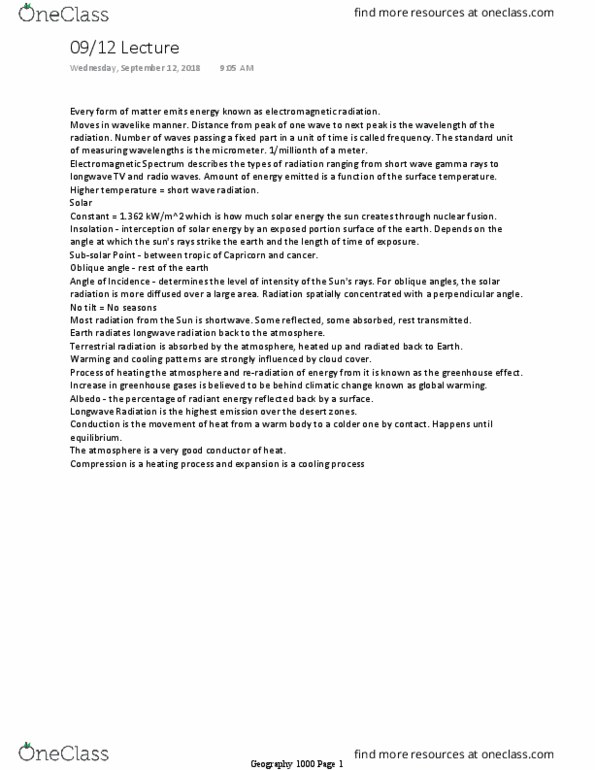GEOG 1000 Lecture Notes - Lecture 6: Angle, Background Radiation, Radiant Energy
GEOG 1000 verified notes
6/43View all
Document Summary
Every form of matter emits energy known as electromagnetic radiation. Distance from peak of one wave to next peak is the wavelength of the radiation. Number of waves passing a fixed part in a unit of time is called frequency. The standard unit of measuring wavelengths is the micrometer. Electromagnetic spectrum describes the types of radiation ranging from short wave gamma rays to longwave tv and radio waves. Amount of energy emitted is a function of the surface temperature. Constant = 1. 362 kw/m^2 which is how much solar energy the sun creates through nuclear fusion. Insolation - interception of solar energy by an exposed portion surface of the earth. Depends on the angle at which the sun"s rays strike the earth and the length of time of exposure. Sub-solar point - between tropic of capricorn and cancer. Angle of incidence - determines the level of intensity of the sun"s rays.




